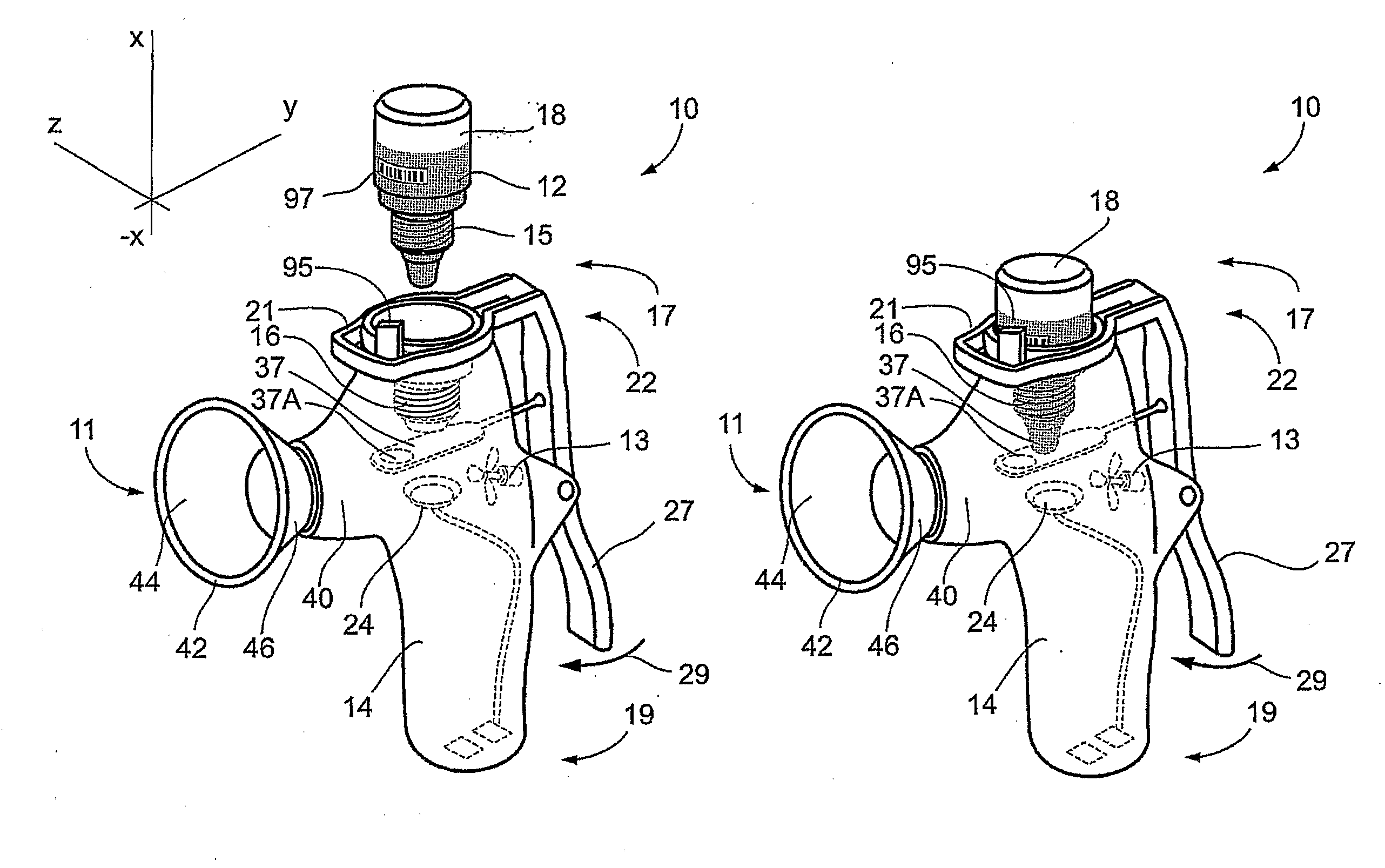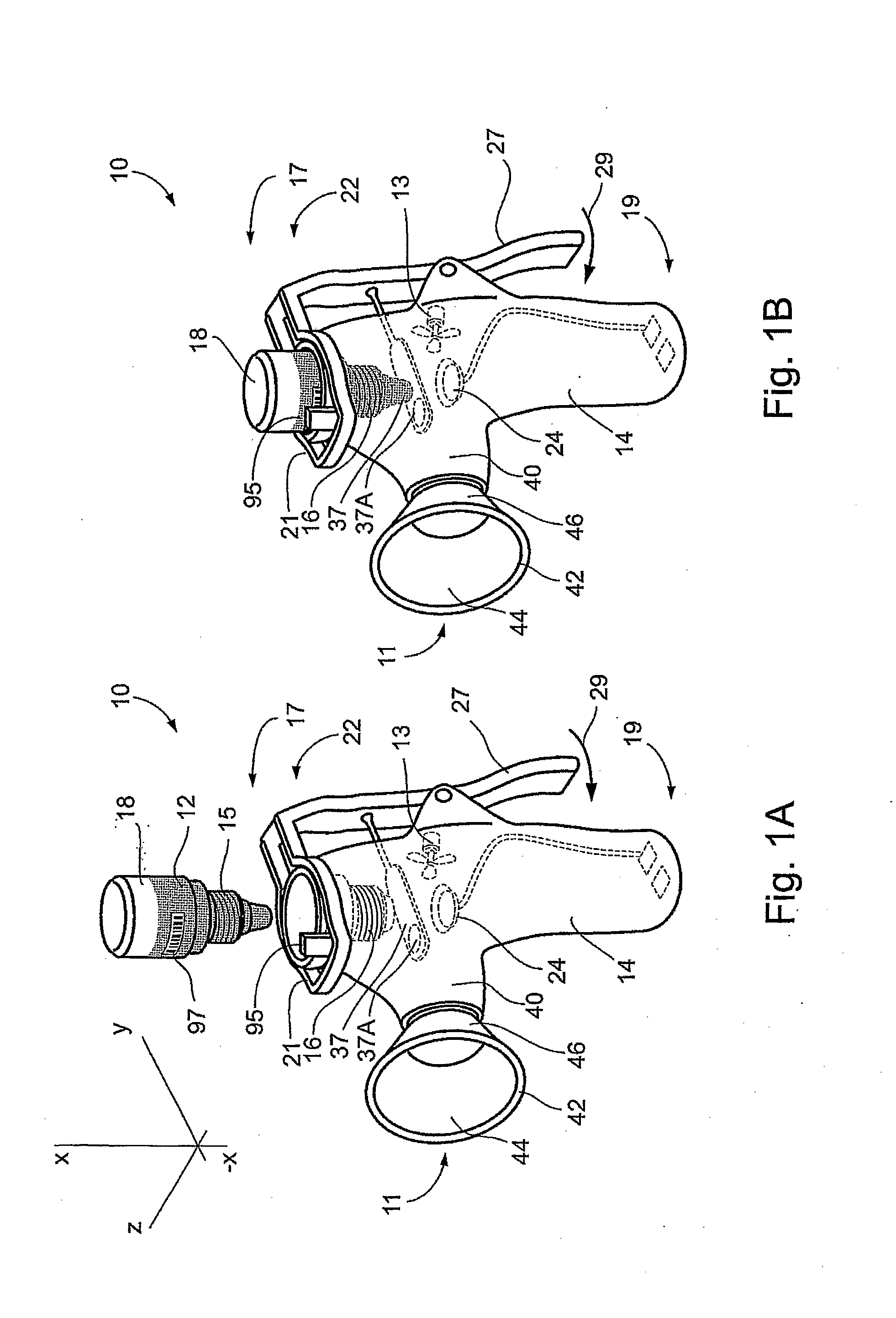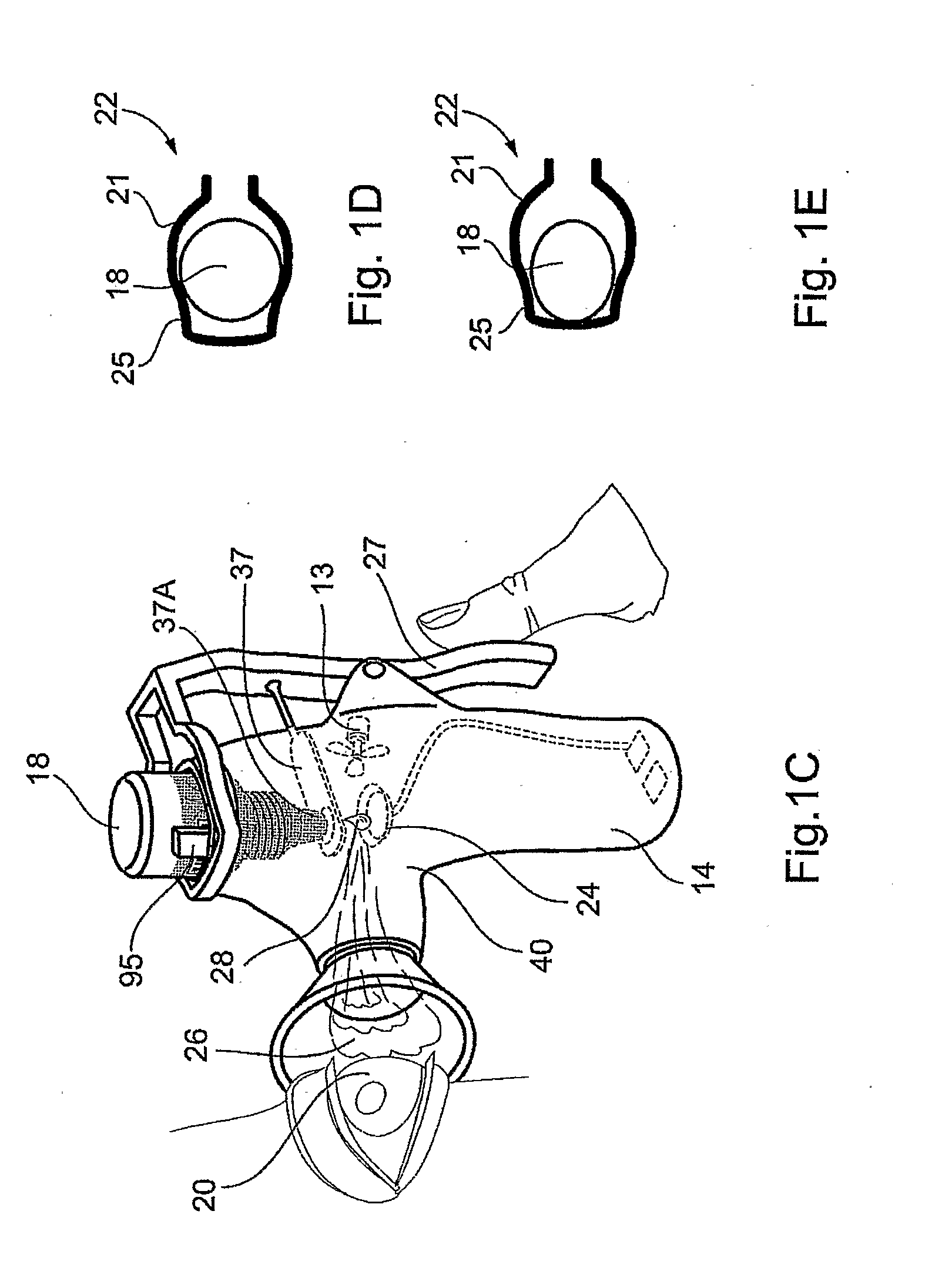Method and Device for Ophthalmic Administration of Active Pharmaceutical Ingredients
a technology of active pharmaceutical ingredients and ophthalmic administration, applied in the field of medicine, can solve the problems of difficult ophthalmic administration of pharmaceutical compositions, unpleasant wide-ranging eye opening, eye drops that require practice, etc., and achieve the effect of effective transfer of vibrations to the eyelids
- Summary
- Abstract
- Description
- Claims
- Application Information
AI Technical Summary
Benefits of technology
Problems solved by technology
Method used
Image
Examples
example 1
Delivery of Middle Sized Protein by Ophthalmic Administration
[0362]A first leptin composition was prepared including 0.6 mg ml−1 leptin (16 kDa) in a standard phosphate buffered saline (PBS) ophthalmic vehicle having a pH of 7.4.
[0363]A second leptin / saponin compositions was prepared including 0.6 mg ml−1 leptin and 1% saponin as a penetration enhancer in a standard phosphate buffered saline (PBS) ophthalmic vehicle having a pH of 7.4.
a. Delivery of Middle Sized Protein to the Retina
[0364]The first leptin composition was administered for 2 minutes as a mist to the eyes of a first group of rats and 1 drop (about 30 μl) instilled into the eyes of a second group of rats. The rats of the two groups were sacrificed 10 minutes after administration. The levels of leptin in the retina and in the AH were compared to those of a control group. The results are depicted in FIGS. 7A and 7B. In FIG. 7A it is seen that both instillation and administration as a mist deliver similar levels of leptin ...
example 2
Delivery of an Antibody by Ophthalmic Administration to the CNS
[0384]A composition containing mouse 2.5 μg ml−1 IgG1 and 1% saponin in a standard phosphate buffered saline (PBS) ophthalmic vehicle having a pH of 7.4 was prepared.
[0385]Using the nebulizer device described above, 20 μl of the IgG1 composition was administered over a period of 2 minutes to each eye of 30 rats making up a first group of rats. Using a nebulizer device, 50 μl of the IgG1 solution was administered over a period of 5 minutes to each eye of 30 rats making up a second group of rats. Using a nebulizer device, 100 μl of the IgG1 solution was administered over a period of 10 minutes to each eye of 30 rats making up a third group of rats. Using a nebulizer device, 100 μl of the IgG1 solution was administered over a period of 10 minutes to each eye of 30 rats making up a fourth group of rats. A group of 30 untreated rats made up a control group.
[0386]The rats of the first, second and third group were sacrificed 10...
##ic example 1
Prophetic Example 1
Administration of GDNF (Glial Derived Neurotrophic Factor)
[0391]A composition containing GDNF as an API with 2% benzalkonium chloride in a standard phosphate buffered saline (PBS) ophthalmic vehicle with a pH of 7.4 is prepared and administered as a mist in accordance with the teachings of the present invention to accumulate in the retina, optic nerve, CSF, and brain of a subject, and thus treat conditions of the retina and central nervous (CNS), such as Parkinson's disease, see Sherer, T. B. et al. Exp. Neurol. 2003, 179, 9-16.
PUM
| Property | Measurement | Unit |
|---|---|---|
| molecular weight | aaaaa | aaaaa |
| volume | aaaaa | aaaaa |
| volume | aaaaa | aaaaa |
Abstract
Description
Claims
Application Information
 Login to View More
Login to View More - R&D
- Intellectual Property
- Life Sciences
- Materials
- Tech Scout
- Unparalleled Data Quality
- Higher Quality Content
- 60% Fewer Hallucinations
Browse by: Latest US Patents, China's latest patents, Technical Efficacy Thesaurus, Application Domain, Technology Topic, Popular Technical Reports.
© 2025 PatSnap. All rights reserved.Legal|Privacy policy|Modern Slavery Act Transparency Statement|Sitemap|About US| Contact US: help@patsnap.com



